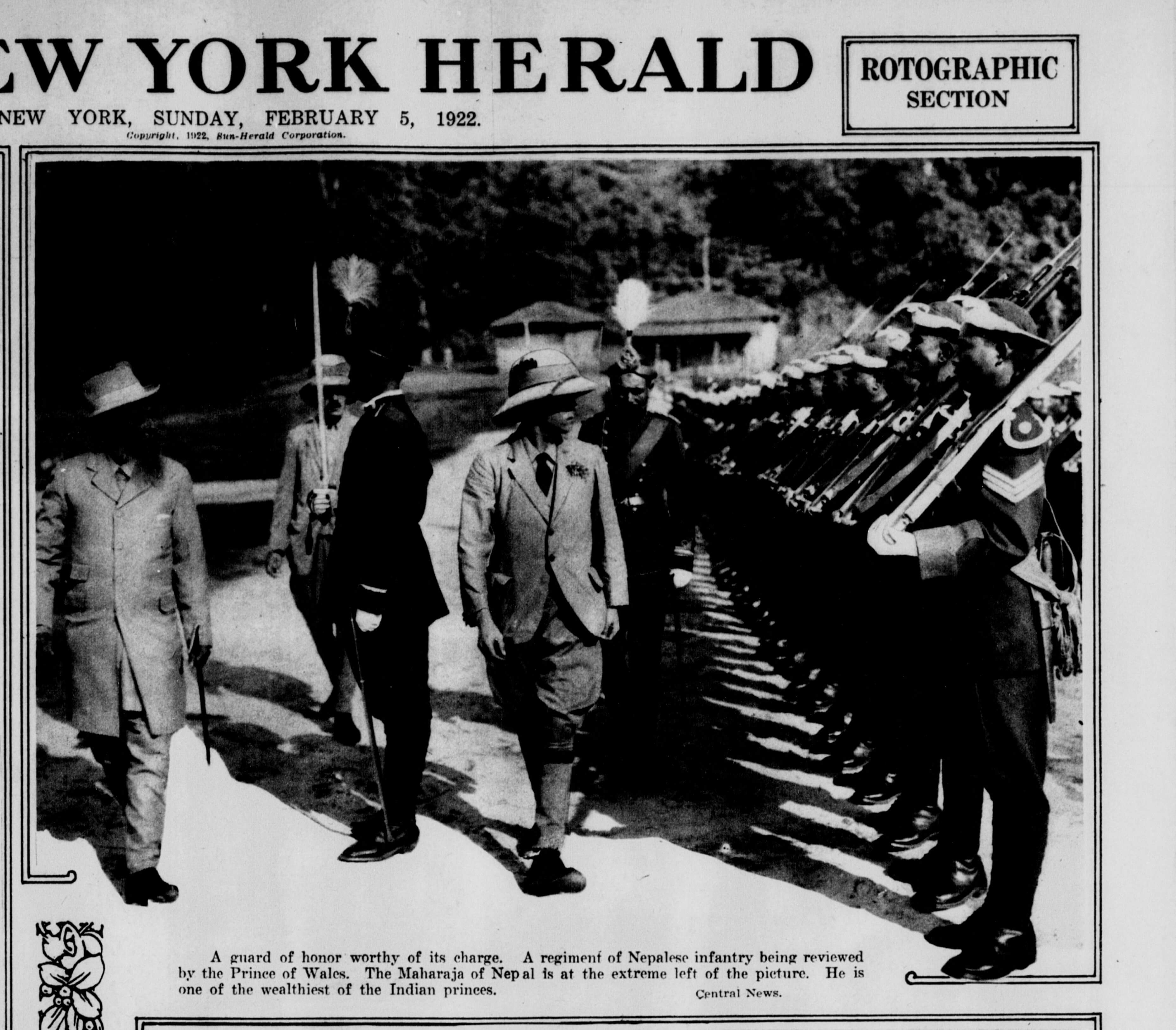Adventures of a lone archivist

Archiving should be a state responsibility, and Nepal does have a National Archive. But a Nepali working in the Gulf has shown how much can be achieved by just one individual with a passion for history.
No one can find the original of the 1816 Sugauli Treaty anywhere. Important historical documents, agreements with Tibet, China and British India are also missing. Many of them probably went up when Singha Darbar caught fire in 1973.
Which is why Santosh Khaderi (pictured below) has taken it upon himself to archive as much as possible of official records, early photographs, letters and ephemera from Nepali history as he can. What started out as a hobby, has now become an important contribution to archiving in Nepal for this 28-year-old Dang native and college dropout.
He has been in Abu Dhabi for the past six years, working night shifts. He found so much factually incorrect news about Nepal that he started collecting digital records of the country’s past wherever he could find them on the Internet. Working 6-7 hours during the day, Khaderi has built up a collection that he also shares widely through his Twitter account and with regular well-researched articles in Annapurna Post.


It all started in 2016, as Nepal was reeling from the aftermath of the earthquake and the Indian Blockade. Khaderi found so many falsehoods and half-truths in media reports that he gave himself the mission to preserve history. Once, while watching Indian news channels he came across a documentary about Prime Minister PV Narsimha Rao which delved into archives to tell his story.
“The hour-long episode was so in-depth and based on historical documents and records, that I wondered why a Nepali could not make a similar documentary about B P Koirala,” Khaderi said in a phone interview from the UAE.

This is why, while carrying on his usual work of collecting historical records, he started zooming in on everything he could find on BP, including archival film footage of his funeral procession in Kathmandu in 1984, letters and other documents.
“Being away from Nepal has made me value my homeland even more, and to stay in touch while being relevant to my roots and upbringing,” Khaderi says. “In addition, it gives me the opportunity to correct historical inaccuracies, bending of facts, or deliberate lies.”
Indeed, his social media posts do not carry that angry tone common to many these days who all bristle with strong opinion about everything. He is not provocatively controversial, he just wants to lay out historical facts based on documents.
Khaderi says it is thanks to the corpus of knowledge on the searchable Internet that he can do this work. Without the net it would be immensely complicated since the documents, records, news clips and film footage are scattered around the world.
“It’s all there on the net, you just have to know how to search for it,” he says. “But I am limited to material that is in the public domain, I don’t have the money to pay for other content.”
Among the rare items in his collection are Rana-era photos, letters written by the palace in Kathmandu to the British in India about the use of Simara airport during World War II, rare clips of Edward VIII, then Prince of Wales with Chandra Shumshere Rana during a hunting trip in Chitwan in 1921, or Tribhuvan’s funeral in Switzerland.

Khaderi’s archive so far has 600 videos, 700 books and newspaper clips, numerous government letters, even invitation cards from Mohan Shumshere for a diplomatic reception at the Nepal Embassy at Barakhamba Road in New Delhi in 1950.
Khaderi has dug up news clips from 100 years ago to piece together Bishnu Shumshere Rana’s affair with a Hollywood dancer, and his eventual death in the Bahamas. What he does not have are photographs of Bishnu Shumshere’s body arriving in Banaras for cremation, which are in the Madan Puraskar Pustakalaya archives in Kathmandu.
“It is disappointing that our country does not have any papers related to the Kalapani border issues and whatever news has been printed is just mudslinging between two governments, there are few fact-based statements,” he says.
He has also dug up a 27-page booklet on Mohan Shumshere Rana that deals with the 1950 Indo-Nepal Treaty with the newly-independent India. Nepal’s claim to Kalapani is mentioned there too.
“I believe that history is now more important than ever, so it is absolutely important for us to have historical evidence from the past. Nepal is at its weakest point now because we never cared about archives as they had vested interest somewhere else,” Khaderi says.

Among Khaderi’s archives is correspondence between Indian Ambassador and Prime Minister Nehru in 1950 in which he cites the Royal Nepal Army’s lack of preparedness to deal with external threats. Within two years of Prime Minister Matrika Prasad Koirala’s visit to India in 1952, Indian military communication units were placed at 17 points along the India-Nepal border.
Khaderi has also dug up reports filed by Indian military about patrols to Kalapani in 1959 that prove that the Indian Army already had bases there. China had just annexed Tibet, the Dalai Lama had fled to India, and India and China were soon to go to war. But these documents prove that the Indian bases in Kalapani were not allowed there during or after the war, but perhaps as long before as 1956.
“Our country and the government has a handful of shortcomings, but the biggest shortcoming is the lack of archives,” Khaderi says. “these should be digitised, stored, and even made public. Hardcopy files can be destroyed, misplaced or even disappear.”
Khaderi says he went to the UAE for financial reasons, but he is itching to get back to Nepal where he wants to set up and maintain a historical archive, and what he has collected so far will be the starting point.





